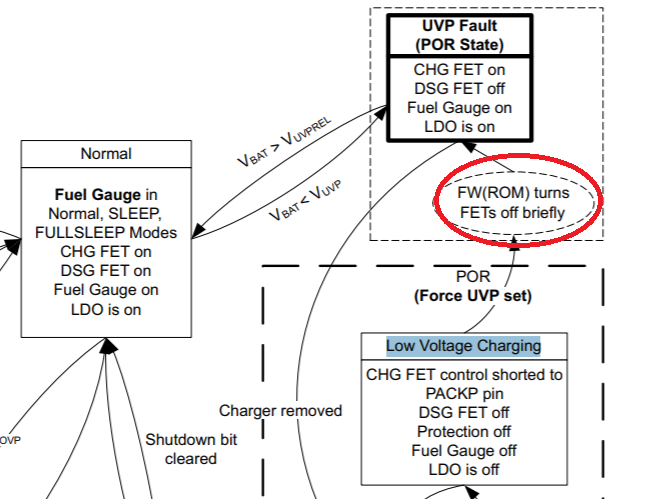Other Parts Discussed in Thread: BQSTUDIO
There is a problem with the BQ27742 operation with a deeply discharged battery. In the range of 1.7..2,13V there is a charge from an external power source with a very small current - that is OK. But in the range of 2.13..2.25 V, the CHG mosfet are turned off and the charge with a small current stops. In the range of 2.25..2.5V a charge starts again with a current of about 100 mA. How can I make a charge in the dead gap in the range of 2.13..2.25 V? This is necessary to restore the battery from a deeply discharged state.



